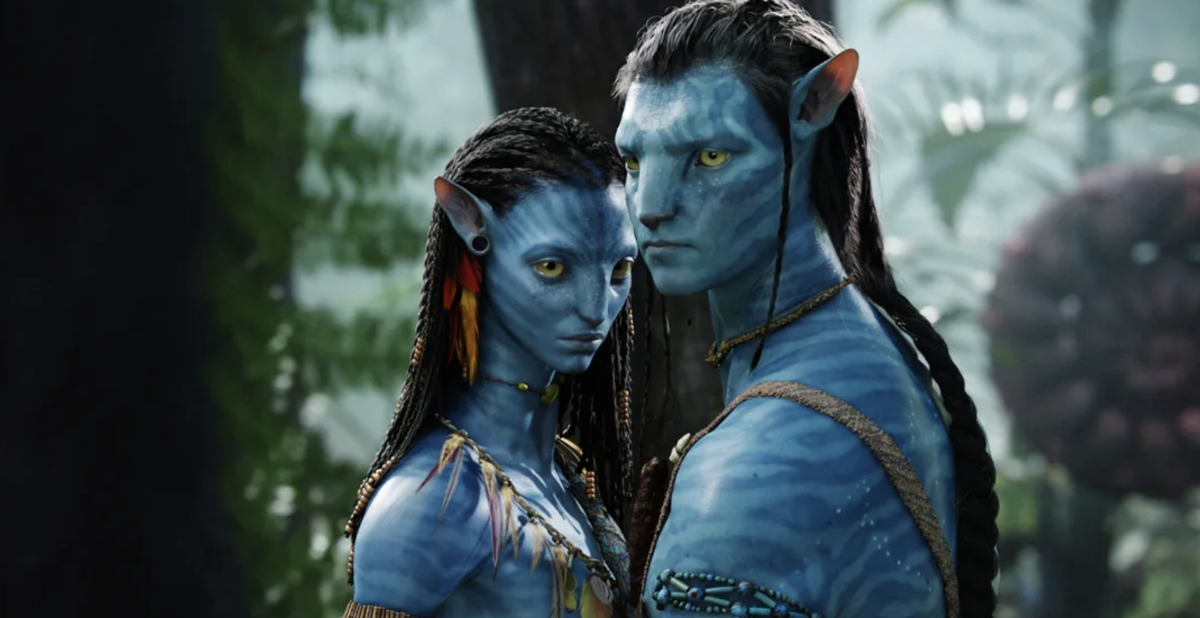
Avatar: The Way of Water is the second in James Cameron’s series about the Na’vi people. Photo: Supplied.
Before I took myself off to see Avatar: The Way of Water, I thought it would be good to refresh myself with the original, which came out in 2009.
Briefly, a mining company from Earth is on a distant planet, Pandora, digging for a rare metal but must make peace with the Indigenous people for this to happen.
The Na’vi are very much in harmony with their environment and this incursion is stirring up some native trouble for the white overseers. One of the men, Jake Sully (Sam Worthington), assumes the avatar of a local (who are large blue people), befriends them but then is cast into the role of saving the Na’vi from the intruding miners and then from themselves. Oh, and there is a love story too (there always is).
Hollywood has a tradition of inserting white actors into so-called “native” roles, which many believe is racist or at best a clumsy form of cultural appropriation. It’s not just the actors, it’s the tenor of Hollywood itself to behave as some sort of standard in the colonial/cultural landscape.
This theme continues with James Cameron’s second Avatar film, The Way of Water. Our hero is now a tribal elder and the mining company they defeated in the last movie is back for a different kind of bounty.
The firm has brought the clone of Colonel Quaritch (Stephen Lang), intent on exacting revenge on Jake and his wife, Neytiri (Zoe Saldana), as she killed the real colonel in the first film.
Fleeing their jungle home and believing the Na’vi are under imminent threat, Jake and his family join a faraway water people who are fairly obviously modelled on the Maori of New Zealand.
The Metkayina are a collection of tribes deeply in harmony with their aquatic environment. This time the mining company is hunting whale brains for everlasting human life.
And so, on repeat, we essentially have the same three strands: miners seeking to exploit the planet; native people needing to be tamed, suppressed or usurped; and the original rogue soldier now with his young family, being pursued by a sadistic army officer who believes he has been betrayed.
It is often said Cameron is one of the most bankable directors in Hollywood (Aliens, Titanic and the first two Terminator films, to name a few). While he has complained about – or at least made an issue of – the cost of this film, he also wrote it. This means an audience member can almost recite every line just before it happens; bankable is predictable.
Although we’ve moved themes from an invading colonising force, it’s not that far. This is essentially Cowboys and Indians in space.
Credit where it is due: the CGI has moved on significantly from the first Avatar film, which rightly won accolades for being a pioneering work using new technology. Cameron should be applauded for taking the risk. And the scenery here is utterly spectacular.
But the themes around harmony, desecration of the environment and spiritual living, where ideas for the Avatar films clearly originate, are best handled by science-fiction filmmakers, not an action director who can’t translate those ideas into meaningful dialogue and thinks trivial conversation (and there’s a lot of it) supplants more important concepts.
Don’t get me wrong, this movie is highly entertaining once you assess those issues, and even if you don’t. But with all those incredible resources, this could have been a much better film. That said, it will kill at the box office; two and a half stars out of five from me.
Avatar: The Way of Water is screening at all major cinema chains.
Marcus Kelson is a Canberra writer and film critic.












